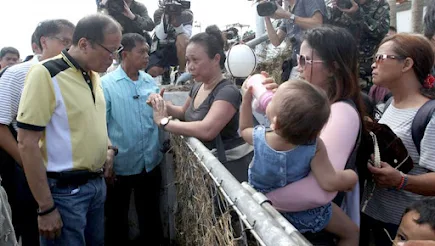 |
Introduction
Weather and natural disasters have been a persistent
challenge across the globe, impacting millions of lives, causing significant
economic damage, and reshaping communities. Recently, the Philippines has faced
severe weather events, particularly with the arrival of Typhoon Enteng, which
has brought intense rainfall, flooding, and strong winds to various regions.
This blog will provide an in-depth look at the recent weather events in the
Philippines, their impact, response measures, and the broader implications for
disaster preparedness and climate resilience.
1. Overview of Typhoon Enteng in the Philippines
Typhoon Enteng made landfall in the province of Aurora in
the northern part of the Philippines. The storm brought with it torrential
rains and powerful winds that caused widespread flooding, landslides, and
significant infrastructure damage. As the storm progressed, various areas were
placed under different typhoon signals, with Northern Luzon experiencing some
of the most severe conditions.
- Impact
on Northern Luzon: Signal No. 2 was raised in Northern Luzon as Enteng
made landfall. The heavy rains led to swollen rivers, landslides, and
flooding in low-lying areas. In some regions, roads became impassable due
to debris and floodwaters, cutting off access to emergency services and
supplies(
).
 |
| 360 Blog |
2. Human Impact and Casualties
The storm's onslaught resulted in several fatalities and
missing persons. Reports indicated that at least seven people were dead and
four were missing in Antipolo due to the storm’s effects. In Naga, a tragic
incident occurred where a baby drowned in the floodwaters, highlighting the
severe human toll of such natural disasters(
).
 |
| 360 Blog |
- Evacuation
and Emergency Response: In response to the escalating situation, local
governments activated evacuation plans to move residents from high-risk
areas to safer ground. However, the speed and intensity of the flooding
caught many by surprise, leading to last-minute evacuations and rescues.
The Philippine Atmospheric, Geophysical and Astronomical Services
Administration (PAGASA) also issued warnings about potential dam
overflows, particularly at the La Mesa Dam, which was nearing its critical
level due to the continuous heavy rainfall(
).
3. Government and Community Response
The Philippine government, along with local disaster
management units, has been actively involved in mitigating the impact of
Typhoon Enteng. Efforts have included the establishment of evacuation centers,
distribution of relief goods, and deployment of search and rescue teams. The
government has also been working closely with non-governmental organizations
(NGOs) and international aid agencies to coordinate relief efforts and provide
assistance to affected communities.
- Local
Initiatives and Preparedness: Communities in high-risk areas have
implemented localized disaster preparedness measures, including community
drills, flood early warning systems, and pre-emptive evacuations. These
measures have been crucial in minimizing casualties and ensuring timely
responses during emergencies.
 |
| 360 Blog |
4. Broader Implications for Climate Resilience
The increasing frequency and intensity of typhoons in the
Philippines are consistent with global trends attributed to climate change.
Rising sea temperatures and changing weather patterns have made typhoons more
unpredictable and severe, posing a growing threat to vulnerable coastal and
island communities.
- Climate
Change and Future Preparedness: The recent events underscore the need
for enhanced climate resilience measures, including improved
infrastructure, better land-use planning, and stronger community-based
disaster risk reduction strategies. There is also a growing emphasis on
integrating climate adaptation into national and local development plans
to reduce vulnerability to future weather-related disasters.
5. Lessons Learned and Moving Forward
The experience with Typhoon Enteng offers several lessons
for disaster preparedness and response:
- Improved
Early Warning Systems: Enhancing early warning systems can provide
critical lead time for evacuations and other emergency measures.
- Strengthening
Infrastructure: Investments in resilient infrastructure, such as flood
defenses and storm-resistant housing, are essential to mitigate the impact
of future storms.
- Community
Engagement: Empowering local communities through education and
training can significantly improve disaster response and recovery efforts.
Conclusion
As the Philippines continues to grapple with the effects of
Typhoon Enteng, it is crucial to reflect on the importance of preparedness,
resilience, and adaptability in the face of increasingly frequent and severe
natural disasters. Strengthening these areas will be vital not only for the
Philippines but for other nations worldwide that are vulnerable to the changing
climate.

0 Comments